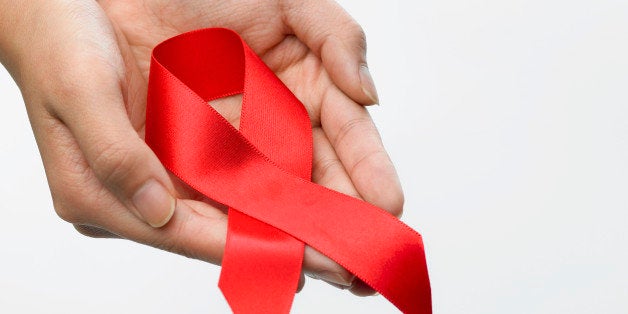
After four decades, we have reached a tipping point in the fight against HIV/AIDS. The global health community now possesses the tools and knowledge to stop this deadly epidemic.
What once seemed impossible is now in reach: an AIDS-free generation and even disease eradication. To achieve this ambitious goal there is much hard work to do. We need to build on a foundation of medical advances by building a layer of community-focused outreach that targets and treats not just the disease, but the social determinants that enable it.
According to the World Health Organization, more than 36 million people are currently living with HIV/AIDS, 70 percent of them in sub-Saharan Africa. Mortality from AIDS decreased 45 percent since its peak in 2005, due in large part to broader access to treatment.
A big reason why deaths from AIDS decreased so dramatically was the remarkable movement for HIV treatment access. The global movement, led by people living with AIDS, fought for new funding for widespread treatment access as a basic human right. That movement -- creating the Global Fund to Fight AIDS, TB and Malaria and later the U.S. President's Emergency Plan for AIDS Relief (PEPFAR) -- has successfully expanded HIV treatment to 17 million people around the world.
Just 15 years ago, such numbers seemed impossible. Many were convinced HIV therapy wasn't feasible in poor countries where systems were weak, health professionals were few, and people lived far from care. In 1998, Partners In Health (PIH) and Zanmi Lasante, our local partner in Haiti, offered the HIV drug cocktail (a combination of three antiretroviral medications) to people living with HIV/AIDS in Haiti.
Our effort, called the HIV Equity Initiative, proved treatment for first just a handful of the sickest patients, later 50, then 100. PIH's HIV Equity Initiative proved to the world that excellent, life-saving HIV care could be delivered to people living in the world's poorest regions. Our work gave hope to the many millions of people, particularly in sub-Saharan Africa, who had no access to the life-saving drugs. The HIV Equity Initiative became part of the story of the movement for AIDS treatment access. It was studied and costed out to provide Kofi Annan, the Director-General of the United Nations, some guideposts in his call for the creation of the Global Fund in 2001.
In addition to overturning conventional wisdom, PIH employs community health workers and pays attention to social factors such as food and shelter to support patients' adherence to lifetime therapy for HIV (as well as other diseases). This community-based model has contributed to some remarkable results. For example, a study of patients in rural Rwanda who received regular visits from community health workers found that 92 percent were still taking antiretroviral therapy (ART) two years after enrollment. That is a stunning achievement that outpaces similar efforts in far wealthier parts of the world.
Today, we work in seven countries with governments and communities now working to design and implement plans to achieve an AIDS-free generation through the United Nations' 90-90-90 framework. The goals: 90 percent of people know their HIV status; 90 percent of those with HIV are on ART; and 90 percent of those on ART have an undetectable level of the HIV virus circulating in their blood, are living healthy lives, and are only minimally infectious.
To reach this ambitious goal, a broader application of proven community-based approaches -- with a focus on testing, treatment, and prevention -- is critical. We must continue to address patient-level barriers to testing to ensure that everyone living with HIV knows their status. These barriers are primarily related to poverty but also include long travel distances and stigma, among other factors.
Expanding HIV testing is absolutely essential to the continued progress in the fight against HIV/AIDS, and experience tells us that engaging trusted community health workers is the key to reaching more people. Ensuring the availability of an adequate number of tests and the timely transport of diagnostic specimens and results are also vital to this effort. Particular attention and tailored strategies should be applied to higher-risk and harder-to-reach groups, including pregnant women, HIV-exposed infants, adolescents and youth, sex workers, prisoners, and all people living in poverty and in remote areas.
We also need to apply community-based approaches to treatment and prevention. It is important to understand that HIV treatment and prevention go hand in hand. Patients who adhere to ART and have undetectable viral loads are not only able to lead healthy lives, they are far less likely to infect others. Pregnant women are among the most important to reach, as treatment can prevent mothers from passing the infection to their children. As with testing, it is crucial to address patient barriers to reaching treatment, using the community-based strategies and solidarity on which PIH has based its programs. This is the key to finding patients in need of ART and helping them initiate treatment and stay on medications.
It is more important than ever to advocate globally for cheaper and more available medications, including fixed-dose combination regimens for children and for patients needing second-line and third-line treatment. Pre-exposure prophylaxis has been proven as an effective strategy for some groups in well-resourced settings. It is vital to make these medications more available to provide the same opportunity to people living in resource-poor settings, particularly for couples with one partner who is HIV positive and one who is not and others at high risk of infection.
Our collective efforts to combat this epidemic must account for the underlying conditions that facilitate its deadly spread. PIH provides a voice and a model for reaching the world's most vulnerable HIV patients based on a community-focused, rights-based, and equity-driven agenda. By applying these strategies more broadly, we are convinced that the elusive goal of a generation free of HIV/AIDS is within reach.